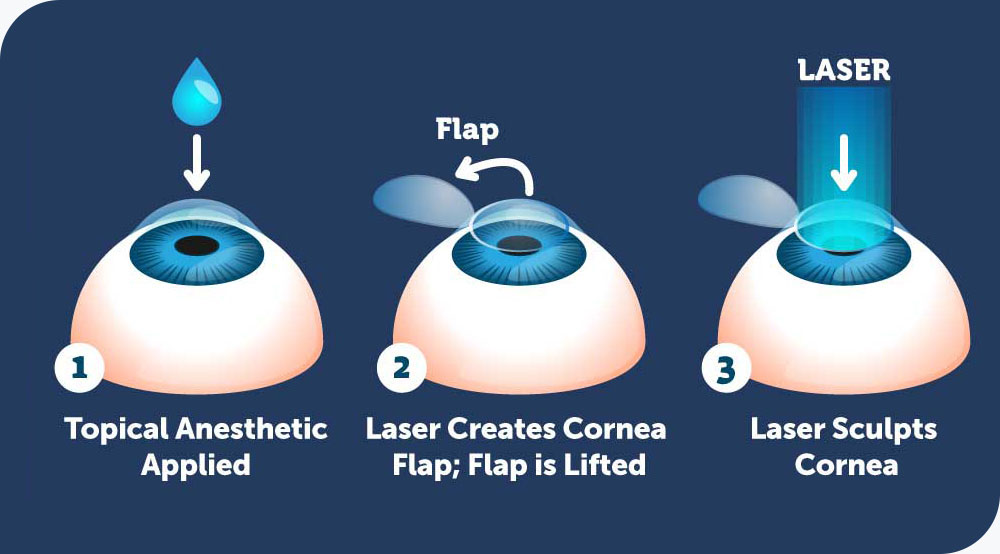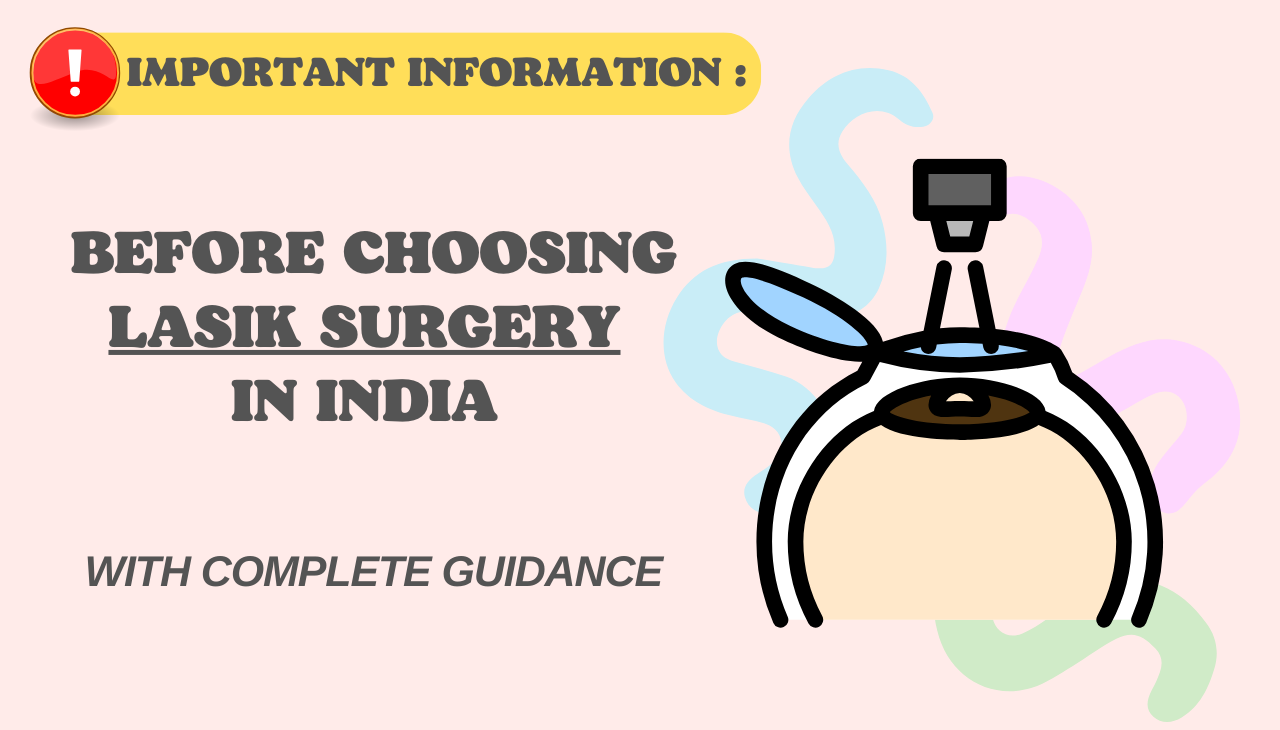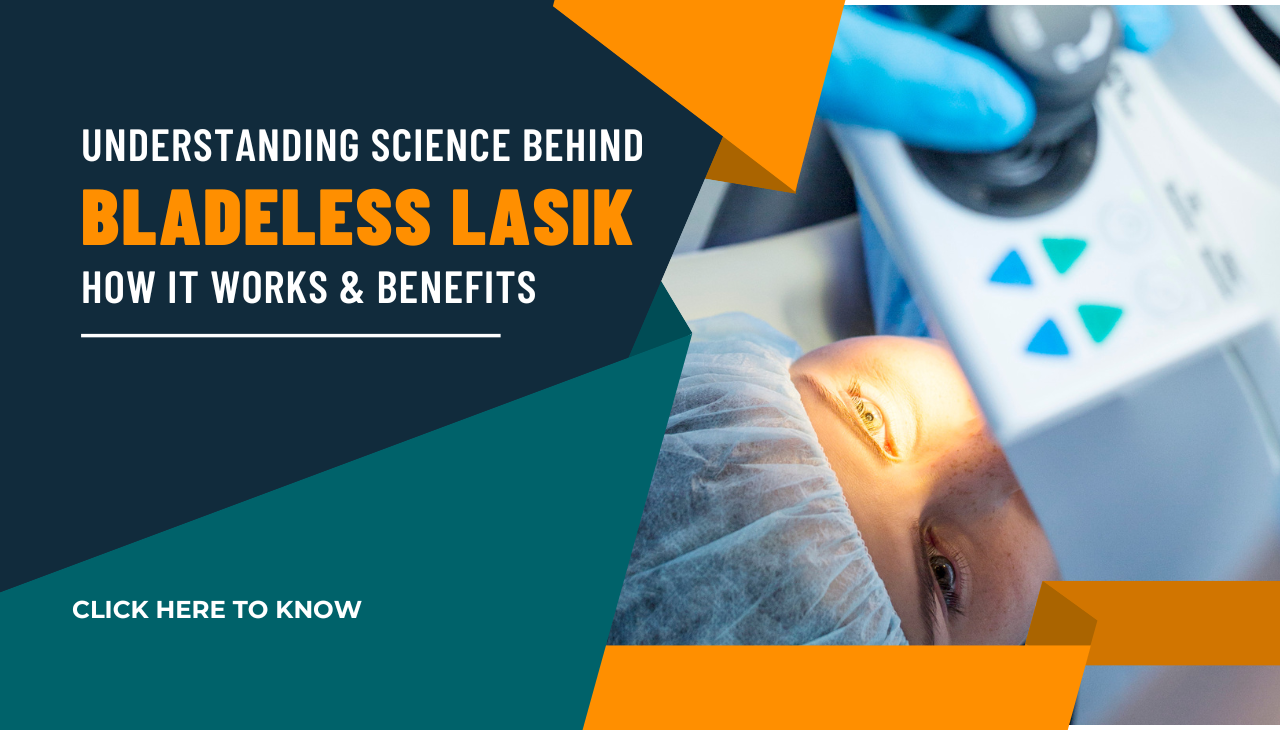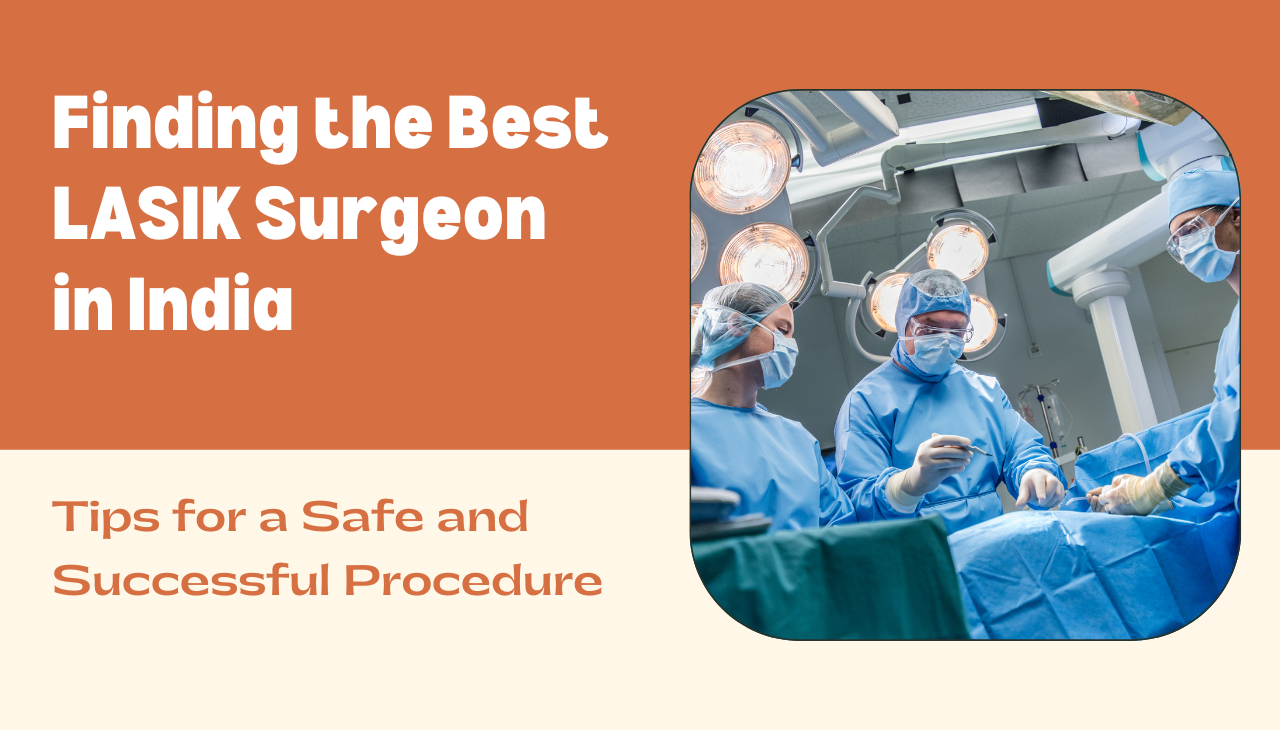Are you tired of reaching for your glasses every morning, or do you despise the hassle of putting in contact lenses day in and day out? If so, LASIK surgery might be the solution you’ve been looking for to achieve clear vision without the aid of corrective eyewear.
In India, LASIK surgery has become increasingly popular, and many are now opting for bladeless LASIK procedures to enhance their visual quality. This article will take you through the good and bad of LASIK surgery, particularly bladeless LASIK, and what you need to know before undergoing the procedure in India.
Let’s understand LASIK Surgery
LASIK, which stands for Laser-Assisted In Situ Keratomileusis, corrects common vision problems like nearsightedness (myopia), farsightedness (hyperopia), and astigmatism through a surgical procedure. The primary goal of LASIK is to reshape the cornea, the clear front part of the eye, which is responsible for sending visual signals to the brain. The cornea helps to focus the light entering the eye onto the retina.
Traditionally, LASIK surgery involved the use of a microkeratome, a small mechanical blade, to create a flap in the cornea, which was then lifted to allow access for reshaping. However, advancements in technology have given rise to bladeless LASIK, which eliminates the need for a blade and offers several advantages.
What is the difference between Bladeless LASIK and Traditional LASIK?
Bladeless LASIK is a safer and more precise alternative to traditional LASIK. Here’s how it differs:
- Bladeless LASIK utilizes a femtosecond laser to create a corneal flap with extreme accuracy and precision, reducing the risk of mistakes associated with using a blade.
- Bladeless LASIK allows for a higher degree of customization. Wavefront-guided and topography-guided treatments customize your unique visual requirements, delivering better visual outcomes.
- Many patients report less discomfort and a quicker recovery time with bladeless LASIK due to the reduced trauma to the cornea.
Given these advantages, it’s no wonder that bladeless LASIK has gained popularity in India and around the world.
How to choose the right surgeon?
Selecting a skilled and experienced LASIK surgeon is crucial for a successful outcome. Here are some factors to consider you have to keep in mind when choosing a surgeon in India:
- Ensure that the surgeon is board-certified and has received specialized training in refractive surgery.
- Ask beforehand about the surgeon’s experience with bladeless LASIK and their success rate. A surgeon who has performed a significant number of procedures is likely to be more proficient.
- Always inquire about the technology and equipment used for the procedure. A well-equipped clinic with the latest laser technology can enhance the precision and safety of your surgery.
- Read reviews and testimonials from previous LASIK patients to know their experience and results.
- Schedule a consultation with the surgeon beforehand to discuss your specific needs, expectations, and any concerns you may have.
- Inquire and understand the cost of the procedure, which can vary depending on the clinic, surgeon’s experience, and the type of technology used.
Preparing for Bladeless LASIK Surgery? Keep this in mind!
Before undergoing bladeless LASIK surgery in India, there are several essential steps to follow:
- Your surgeon will conduct a thorough eye examination to determine your candidacy for LASIK. This includes assessing your eye health, prescription, and corneal thickness.
- If you wear contact lenses, you may need to switch to glasses for a specific period before surgery to allow your corneas to stabilize.
- Inform your surgeon about your medical history, including any underlying health conditions, allergies, or medications you are taking.
- Don’t hesitate to ask your LASIK surgeon any questions or voice concerns you may have. Understanding the procedure completely will help alleviate anxiety.
- Arrange for transportation to and from the hospital as you may not be in a condition to drive immediately after the surgery.
- Your surgeon will provide pre-operative instructions, which may include restrictions on food, alcohol, and cosmetics on the day of surgery.
The LASIK Surgery Process. How is it done?

On the day of your bladeless LASIK surgery in India, you can expect the following steps:
- Numbing eye drops are used to ensure you are comfortable during the procedure.
- The laser is used to create a thin, hinged corneal flap.
- An excimer laser is used to reshape the cornea based on your individual optical requirement.
- The corneal flap is gently repositioned, and it sticks and returns back to its old shape naturally without the need for stitches.
- Your surgeon or ophthalmologist will give instructions on how to care for your eyes post-surgery, including the use of prescribed eye drops.
Recovery and Results
Recovery from bladeless LASIK surgery is relatively quick. Most patients experience improved vision within the first 24 to 48 hours. You may feel some mild discomfort, dryness, and sensitivity to light in the initial days. However, these symptoms usually go away on their own. It’s essential to follow your surgeon’s post-operative care instructions to ensure a smooth recovery.
The results of bladeless LASIK surgery are often remarkable. However, individual outcomes can vary, and some patients may require enhancements or experience minor side effects like halos or glare, which usually diminish over time.
Conclusion
Bladeless LASIK surgery at Laxmi Eye Hospital can liberate you from glasses and contacts. With cutting-edge technology and skilled surgeons in India, the procedure is now safer and more precise than ever. To ensure the best outcome, thoroughly research your options. Select a reputable surgeon for the procedure. Adhere to all pre-operative guidelines carefully. Follow post-operative instructions for optimal results..
If you’re contemplating bladeless LASIK at Laxmi Eye Hospital, seek a consultation with our expert ophthalmologist to determine your candidacy. With a proficient surgeon and a full grasp of the procedure, you can anticipate a clearer, glasses-free future. Enjoy enhanced vision and newfound freedom.




